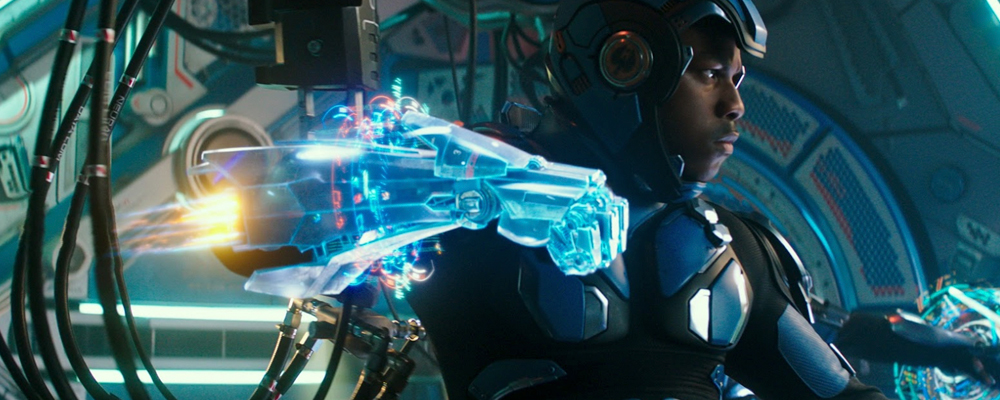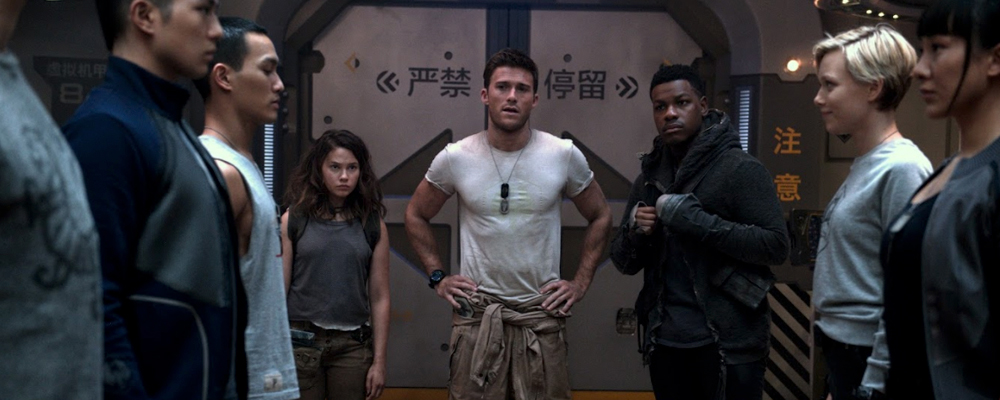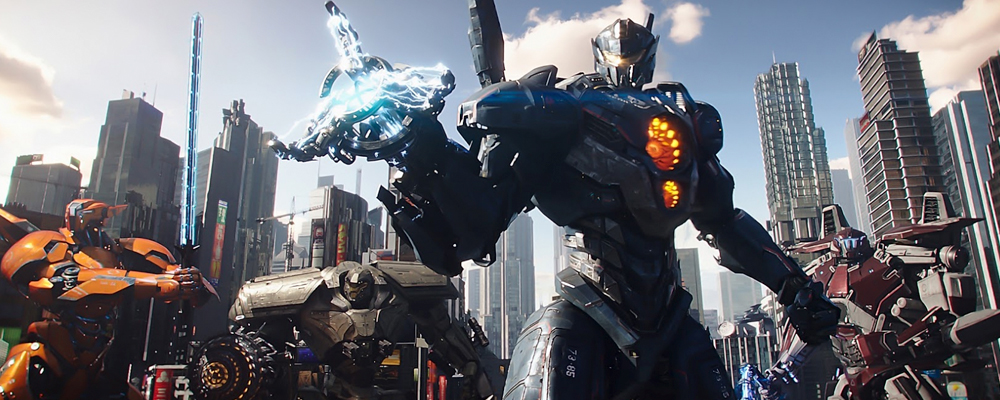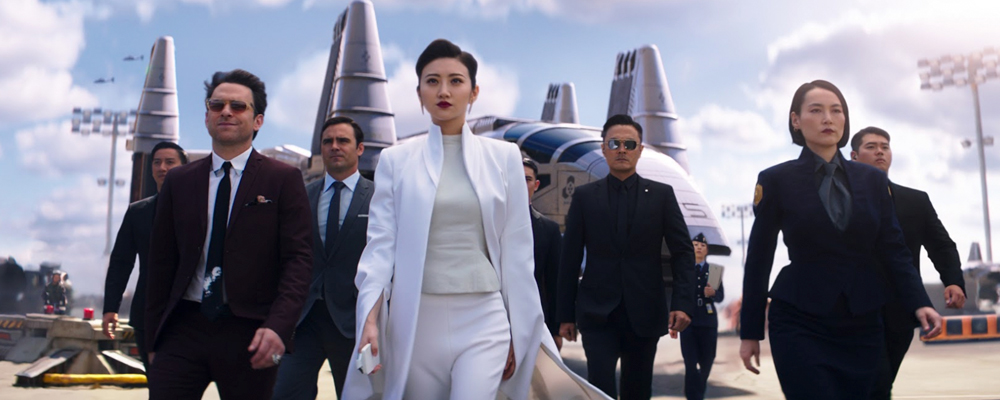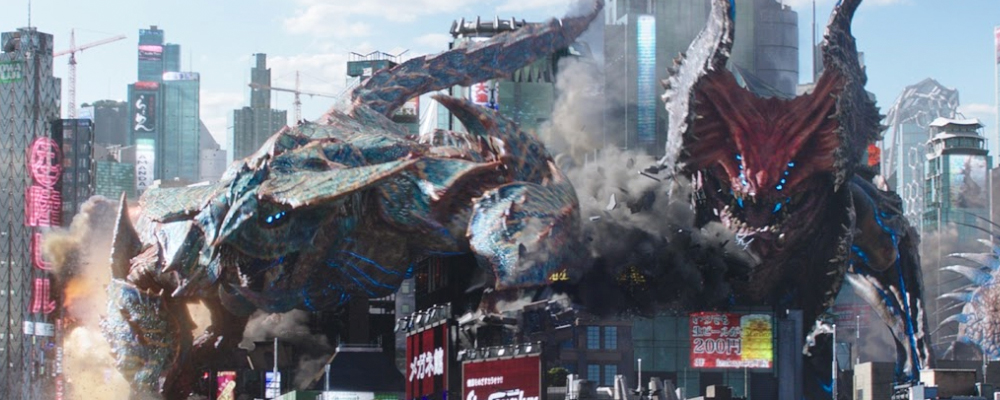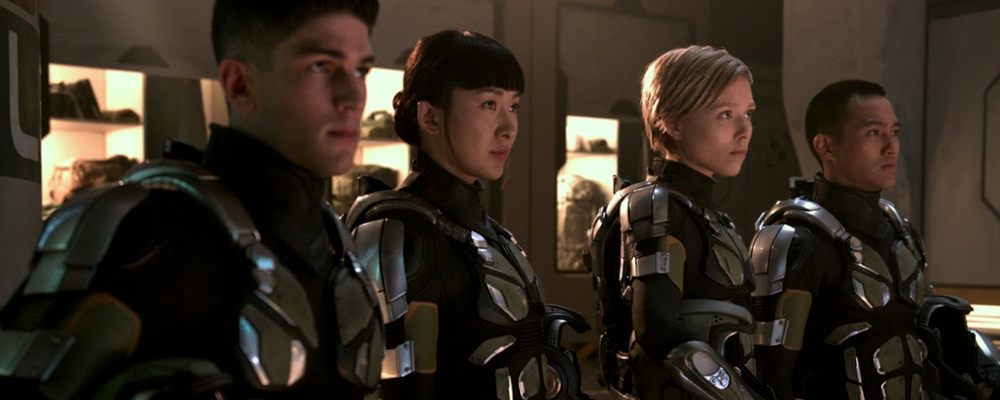‘Pacific Rim: Uprising’ Is a Massively Disappointing Sequel
Aaron Berke
“Pacific Rim: Uprising” is the sequel to director Guillermo Del Toro’s 2013 sci-fi blockbuster. The original “Pacific Rim” was Del Toro’s love letter to Japanese monster movies, and that reference point, along with the director’s auteur sensibilities, helped distinguish his film from the mainstream Hollywood pack. From the first frame of “Pacific Rim: Uprising,” it’s very clear that Del Toro had little to do with it, despite a producer credit. The dizzying pace, stereotyped characters, and Transformers-esque smackdowns are all evocative of precisely the kind of film Del Toro sought to overcome. Instead, “Uprising” embraces the worst elements of conventional Hollywood blockbusters while dispensing with the original’s stylistic influences.
The sequel follows the events of the first film, which saw a showdown between the man-piloted robots the Jaegers and the Godzilla-esque sea monsters the Kaiju. The Kaiju were on the path to destroying the world, before the heroic Stacker Pentecost and his partner sacrificed themselves to help seal the breach and stop the monsters for good. “Uprising” follows Jake Pentecost (John Boyega), the indifferent son of Stacker who has denied his father’s legacy. But he’s drawn back into the military when he’s caught stealing a rogue Jaeger along with a scrappy young scavenger named Amara (Cailee Spaeny). At the Jaeger military base, Jake reunites with his adoptive sister, Mako (Rinku Kikuchi), who returns from the first film with news of a private firm’s attempts to replace the two-man piloted Jaeger system with a dangerous automated system. This automated system soon leads to Jaeger vs. Jaeger conflicts galore, along with the re-emergence of the Kaiju and yet another apocalyptic battle to save the world.
Steven S. DeKnight takes over writing/directing duties from Del Toro, and on paper, DeKnight could have been an excellent successor. He has great TV writing credits on programs like “Angel” and “Daredevil,” The thing both those programs have in common is an emphasis on character development over spectacle. This might have boded well for the sequel to a film that deftly juggled dual tasks of world-class spectacle and heartfelt characters. Unfortunately, DeKnight seems to have fallen under the spell of mainstream Hollywood craftsmanship. Whatever originality DeKnight’s writing possessed seems to have been lost in the translation from television to film. “Pacific Rim: Uprising” alternates between formulaic character beats and gigantic, unconvincing battle sequences.
Jake undergoes a predictable arc, first rejecting the call to action and eventually taking up his father’s mantle. Amara must face the ghosts of her past while making a name for herself in the academy, playing out an arc that essentially repeats Mako’s story from the first film. Mako, for her part, is criminally underused in the sequel after playing a critical role in the original. DeKnight uses her as a plot device to motivate Jake, and completely ignores the path the first film’s ending set her on. This is the area in which “Uprising” most notably fails. Instead of furthering the first film’s strong character-based storytelling, the sequel fuels itself with the most superficial elements of the original.
Even prominent returning characters like Dr. Newton Geiszler (Charlie Day) and Dr. Hermann Gottlieb (Burn Gorman) are morphed into clichés. In the first film, both characters were comedic in nature, but worked at cross purposes to try and uncover different aspects of the Kaiju. Here, DeKnight aligns them as a slapstick comedy duo, who play off each other and deliver silly puns and one liners. The same can be said for virtually every other character in the film. DeKnight does employ one interesting plot twist involving the two scientists, and it’s the only time in the film that his old writing prowess shines through.
The area where “Pacific Rim: Uprising” manages to impress, as the first film did, is in its use of spectacle. Some of the early fight sequences between the Jaegers are well choreographed and thrilling to behold. But they wear thin after the first few clashes, and consistently remind the audience of how much more meaningful the first film’s conflicts were. The clash between the Jaegers and the Kaiju were deliberately reminiscent of classic Japanese monster movies like Godzilla vs. Mothra. Here, the Kaiju don’t even appear until near the end of the film. Most of “Uprising’s” conflicts are Jaeger vs. Jaeger, battles which completely lack stylistic relevance and instead feel like “Transformers” knock-offs. Jaeger vs. rogue Jaeger plays out suspiciously like Optimus Prime vs. Megatron, suggesting that “Uprising” has traded the original’s unique Japanese influence for an amorphously flat American one. Even the film’s finale plays out more like the Matthew Broderick Godzilla remake than the Japanese original. The Kaiju no longer have a distinct flavor. They’re just convenient monster-shaped plot devices to help the movie careen toward its inevitable apocalypse.
Overall, “Pacific Rim: Uprising” is a colossal disappointment that fails to uphold the legacy established by Del Toro. DeKnight tries to make the film impressive, but he succeeds only with his large-scale robot fights. Otherwise, the first-time film director disappointingly caves to Hollywood formula. It’s unclear whether the blame lies more with DeKnight or Universal Studios’ mandates. What is clear is that innovation and style have been replaced by cliché and contrivance. In “Pacific Rim: Uprising” there is indeed a returning monster, but it isn’t the Kaiju. Hollywood rears its monstrous head to swallow yet another formerly viable property.
“Pacific Rim: Uprising” opens March 23 in theaters nationwide.

